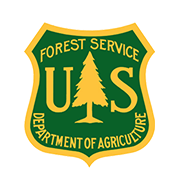Single Publication
Could not determine your location.
Sawlog Fire Morning Update 05-07-2025
Sawlog
Publication Type: News - 05/07/2025 - 07:56
Incident Commander: Richard Griffin (Type 3 IC) and Kyle Errecart (Type 3 IC Trainee)
Location: 15 miles northeast of Wisdom, MT in the Sawlog Creek drainage
Start Date: 05/01/2025
Cause: Undetermined – under investigation
Size: 1,412 acres (change due to accurate mapping)
Resources Assigned: 3 crews; 3 engines; 1 helicopter; 1 water tender; 1 skidgen
Total Personnel: 134
Containment: 10%
CURRENT STATUS/PLANNED ACTIONS:
Cooler temperatures and higher relative humidity levels continued to play a role in minimal fire activity yesterday. Fire behavior was limited to creeping and smoldering. The fire area received 0.10 to 0.30 inches of precipitation over that last 48 hours. Large, heavy fuels continue to smolder, despite the precipitation. Fire behavior is expected to pick up as warmer and drier weather is forecasted over the next few days.
On the western edge, crews are continuing with structure assessments working north along the Highway 43 corridor. A boat will be used to support firefighters in gaining access to the fire across the Big Hole River over the high-water conditions.
On the northern flank and working to the south, the smokejumpers identified helispot locations; they progressed along the north, working along the eastern flank scouting potential control lines along this, looking for opportunities to go direct in the Tucker Creek area. A large skidgen has arrived and will support the smokejumpers with water missions.
On the southern edge, firefighters are progressing east from the Big Hole River along Toomey Creek with mop up operations. Two Type 1 hotshot crews are prepping line towards the 2021 Alder Creek Fire footprint.
The helicopters were utilized for cargo missions to support the firefighters. An Unmanned Aircraft System (UAS) has been supporting the fire by flying infrared (IR) and reconnaissance operations that are inaccessible by foot and thick with hazard trees or “snags.” Scattered heat along the entire fire perimeter was found yesterday by flying infrared.
An Incident Command Post has been established at Wisdom Airport.
The fire remains under investigation. Neither the Forest Service nor the BLM had any prescribed fires (commonly referred to as “controlled burns”) in that area.
WEATHER, FUELS, AND FIRE BEHAVIOR:
Temperatures forecasted to return to high 70's and low 80's through the rest of the week and into the weekend. A mostly dry cold front will move across the fire area Thursday morning bringing gusty westerly winds.
The fire is burning mainly in sagebrush and Lodgepole pine timber. The north-facing slopes in the area consist of a high “dead and downed” fuel component in a mixed conifer forest, and numerous “snags” or hazard trees are present. This fuel combination poses additional hazards for firefighters and affects on-the-ground progress.
Ensuring firefighter safety and protecting life and property are of the utmost importance during any incident.
Prior to the cold front, the fire exhibited moderate to extreme fire behavior, with 3 to 5-foot flame lengths in the sagebrush and isolated torching, group torching, and crown runs through the tops of the trees in the timbered areas. When winds have aligned with the orientation of drainages, fire behavior has been extreme. Fuel conditions, during this time of year (pre-green up), are extremely dry.
The fire footprint from the 2021 Alder Fire is located to the east, and the fire footprint from the 2021 Christensen Fire lies to the south.
CLOSURES:
For public safety reasons, the Bureau of Land Management has issued a temporary closure for the Sawlog dispersed camping area, located at the Big Hole River ford site. Specific closure language can be viewed on the Sawlog Fire Inciweb page, Closures tab.
A Temporary Flight Restriction (TFR) has been implemented over the fire area. This allows for firefighting aircraft to safely work over the fire area. Firefighting aircraft and drones are a dangerous combination. Drones in the area could lead to accidents or slow down wildfire suppression operations. If you fly…we can’t.

 InciWeb
InciWeb